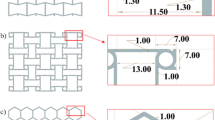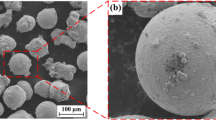Abstract
Thermal damage was applied to LX-17 at 190°C for several hours. The damaged LX-17 samples, after cooled down to room temperature, were characterized for their material properties, safety and performance. Mass losses upon thermal exposure were insignificant (<0.1 mass%). The damaged LX-17 samples expanded, resulting in a bulk density reduction of 4.3%. Subsequent detonation measurements (cylinder tests) were conducted on the thermally-damaged LX-17 samples. The results showed that the fractions of damaged LX-17 reacted were slightly lower than those of pristine LX-17. The thermally damaged LX-17 samples had average detonation velocity of 7.341 mm μs−1, lower than that (7.638 mm μs−1) of pristine LX-17. The average detonation energy density for the damaged LX-17 was 5.18 kJ cm−3, about 6.0% lower than the detonation energy density of 5.51 kJ cm−3 for the pristine LX-17. The break-out curves showed reaction zone lengths for pristine LX-17 and damaged LX-17 were similar but the damaged samples had ragged detonation fronts. DSC curves showed no significant difference between pristine LX-17 and damaged LX-17 with a peak temperature of 381°C observed.
Similar content being viewed by others
References
P. C. Hsu, M. DeHaven, M. McClelland and J. L. Maienschein, Propell., Explos., Pyrotech., 31 (2006) 56.
P. C. Hsu, M. DeHaven, M. McClelland, C. M. Tarver, S. K. Chidester and J. L. Maienschein, Characterization of Damaged Materials, 13th International Detonation Symposium, Norfolk, Virginia, 2006, 1. 617.
P. A. Urtiew, J. W. Forbes, C. M. Tarver, K. S. Vandersall, F. Garcia, D. W. Greenwood, P. C. Hsu and J. L. Maienschein, Shock Sensitivity of LX-04 containing Delta Phase HMX at Elevated Temperatures, APS National Meeting, Portland, Oregon 2003.
P. C. Hsu, P. C. Souers, S. K. Chidester, J. Alvarez, M. DeHaven, R. Garza, P. Harwood and J. L. Maienschein, Propell., Explos., Pyrotech., 32 (2007) 509.
A. K. Burnham, R. K. Weese, A. P. Wemhoff and J. L. Maienschein, J. Therm. Anal. Cal., 89 (2007) 407.
J. W. Kury, H. C. Hornig, E. L. Lee, J. L. McDonnel, D. L. Ornellas, M. Finger, F. M. Strange and M. L. Wilkens, Metal Acceleration by Chemical Explosives, Proceedings Fourth Symposium (International) on Detonation, White Oak, MD October 12–15, 1965, Office of Naval Research-Department of the Navy, Washington, D. C. 1965, pp. 3–13.
P. C. Souers and J. W. Kury, Propell., Explos., Pyrotech., 18 (1993) 175.
P. C. Souers, J. W. Forbes, L. E. Fried, W. M. Howard, S. Anderson, S. Dawson, P. Vitello and R. Garza, Propell., Explos., Pyrotech., 26 (2001) 180.
O. T. Strand, D. R. Goosman, C. Martinez and T. L. Whitworth, Rev. Sci. Instrum., 77 (2006) 083108.
J. E. Reaugh and P. C. Souers, Propell., Explos., Pyrotech., 29 (2004) 124.
Author information
Authors and Affiliations
Corresponding author
Rights and permissions
About this article
Cite this article
Hsu, P., Souers, C., De Haven, M. et al. Characterization of thermally-damaged LX-17. J Therm Anal Calorim 93, 311–317 (2008). https://doi.org/10.1007/s10973-007-8869-y
Published:
Issue Date:
DOI: https://doi.org/10.1007/s10973-007-8869-y




